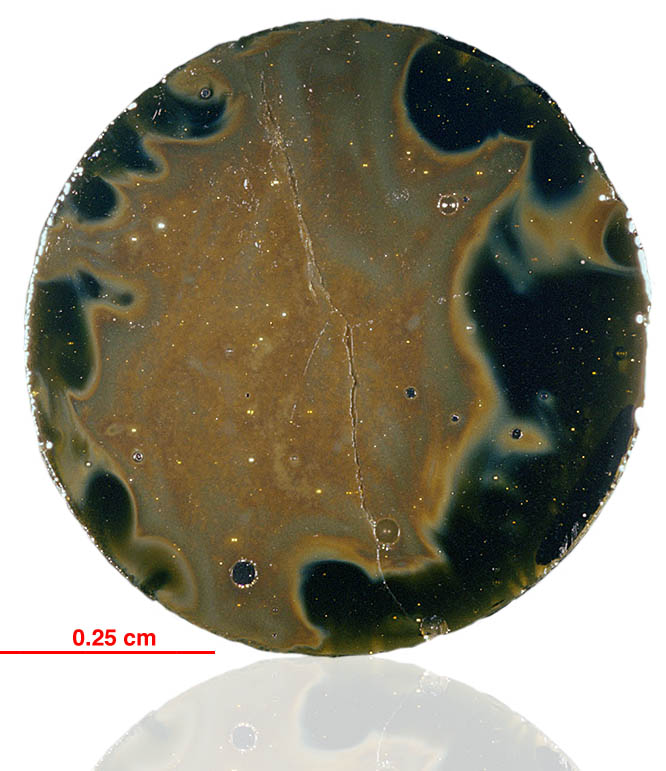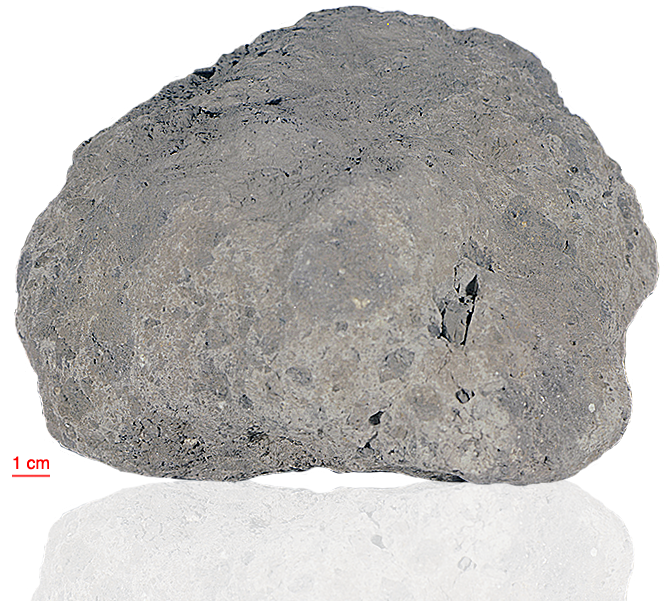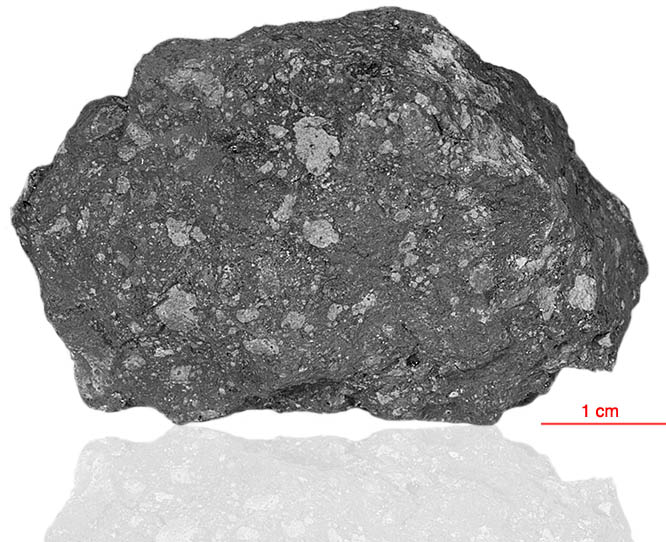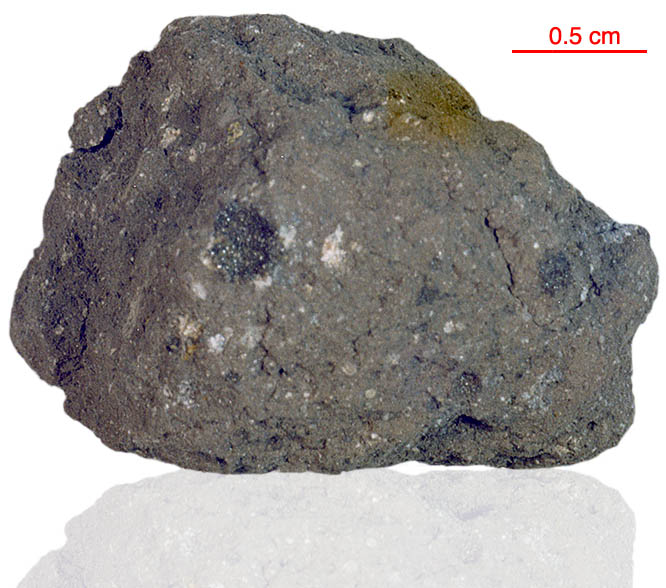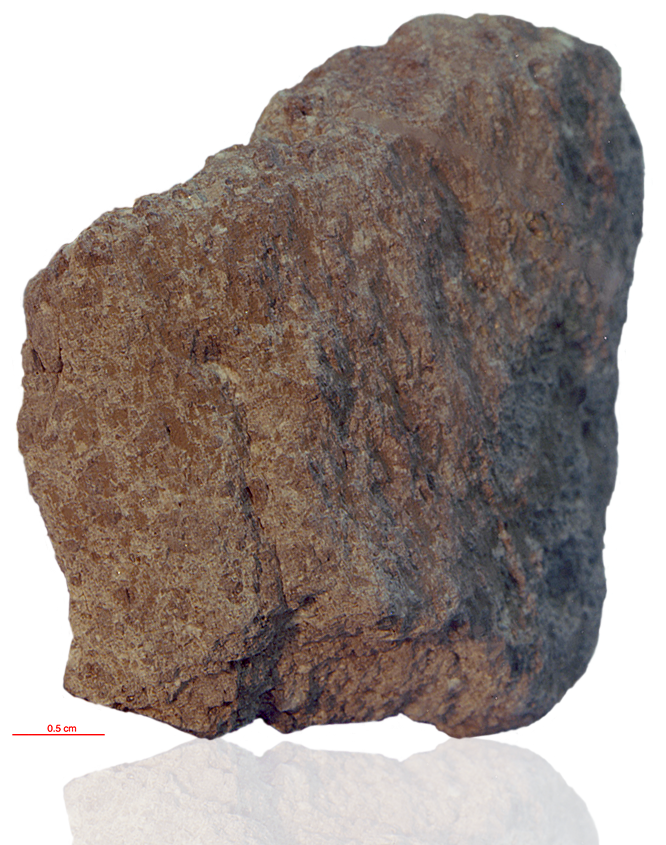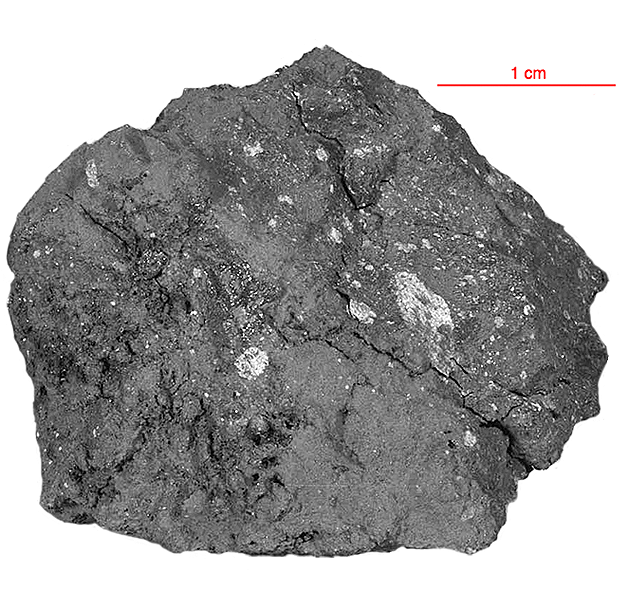
Fact sheet
14073 is a sub-ophitic, intergranular to intersertal, orthopyroxene basalt with KREEP “affinity”. It is composed of 50% plagioclase, 25% clinopyroxene, 20% orthopyroxene with minor ilmenite (2%), troilite, metallic iron, phosphates(2), Fe-Ti-Zr silicates and groundmass. 14073 may be a clast-free impact melt rock like 14310.
The sample weighed 10.35 grams before analysis and is 3.88±0.05 billion years old (Ar/Ar).
KREEP is an acronym built from the letters K (the atomic symbol for potassium), REE (Rare Earth Elements) and P (for phosphorus). It is a geochemical component of some lunar impact breccia and basaltic rocks.
Further details of this and other Apollo samples are here: http://curator.jsc.nasa.gov/lunar/
The Apollo 14 landing site was in a region formed by impact-basin debris.
Most of the 42 kilograms of rocks and soil collected on Apollo 14 are breccias (rocks that are composed of fragments of other, older rocks). In some cases, the rock fragments that form a breccia are themselves breccias. Such rocks obviously have experienced complex histories with multiple generations of impact events. Some breccias were heated enough that some of the material in the rock was melted.
Apollo 14 was launched on 31 January 1971.

